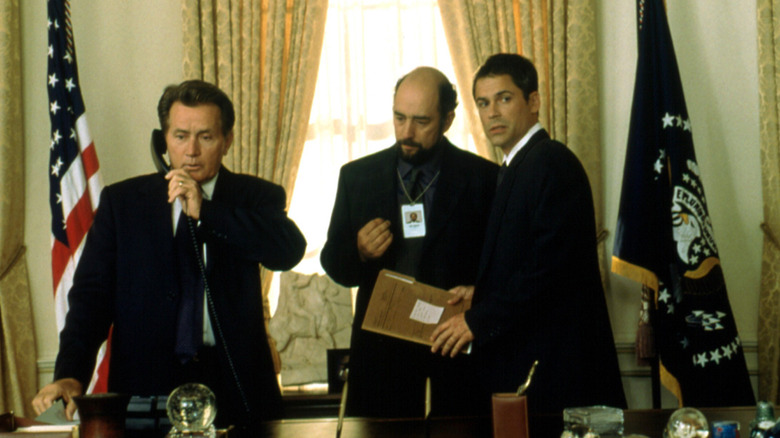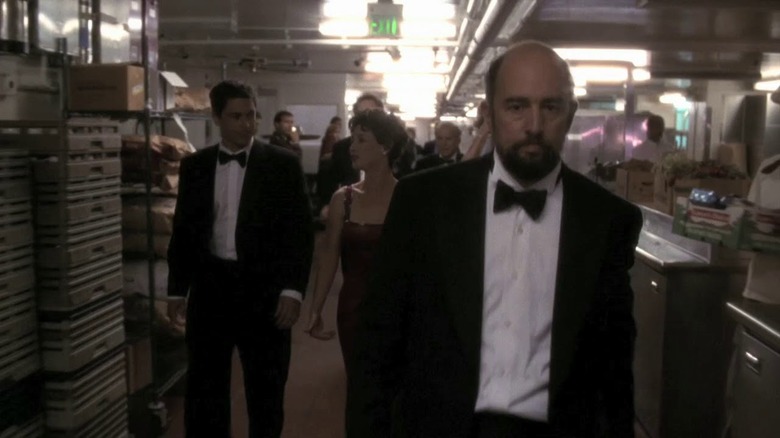How The West Wing's Famous Walk-And-Talk Scenes Came To Be
Hailing from Aaron Sorkin, "The West Wing" is the epitome of the ideal, fictional White House. Every imitation pales in comparison, not for lack of trying. The political drama features an all-star cast spearheaded by Martin Sheen as President Josiah Bartlet, and scripts that sing thanks to the rapid-fire dialogue. The witty, likable characters that make up the administration might be a bit too far-fetched in today's world, but "The West Wing" is a prime example of some worthy escapism. And there is nothing that exemplifies that more than the famous walk-and-talk scenes, of course.
The snappy dialogue often identified with the series creator is aptly glued together by director Thomas Schlamme's penchant for long takes and use of the Steadicam. Each main character gets some time in the spotlight during these extensive sequences, also serving as a seamless transition between scenes. It works so well that the walking-while-talking gimmick is now synonymous with the inner workings of the White House. Well, mainly because the dynamic is actually pretty similar in real life. At least according to Schlamme, who got inspired after getting a first-hand look at a busy day in the highest office of the nation.
'That's the way it should feel'
In an interview with The Hollywood Reporter, Schlamme explained that the idea of following the ensemble cast around during the lengthy, dialogue-driven scenes came from witnessing White House staffers while visiting the Clinton administration:
"I just remember watching everybody, and it just felt like there was so much going on.I was in an office and we were waiting to visit the president with my son and my wife, and all I remember is [Henry] Cisneros came out, [George] Stephanopoulos was moving in there, and five or six people were coming in and out of meetings, and I looked down the hall and there were more people talking. ... That memory jogged when I read Aaron's pilot. That's the way it should feel."
It's almost impossible to imagine how "The West Wing" would move so seamlessly without the walk-and-talk technique. The scripts by Sorkin and co. are fantastic, but they can get pretty heavy, pretty quickly. The coherent nature of the final product speaks to the commitment of the Emmy-winning cast and crew to bring every character to life. "The West Wing" may have relied on the trope a bit too heavily in the latter seasons, however, keeping faithful to real life has never felt so transporting.
If you want to take a blast in the past while looking to the future, catch "A West Wing Special To Benefit When We All Vote" on HBO Max.

